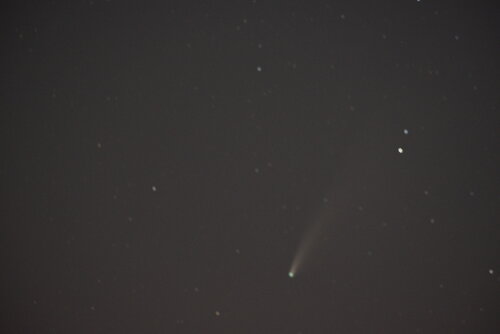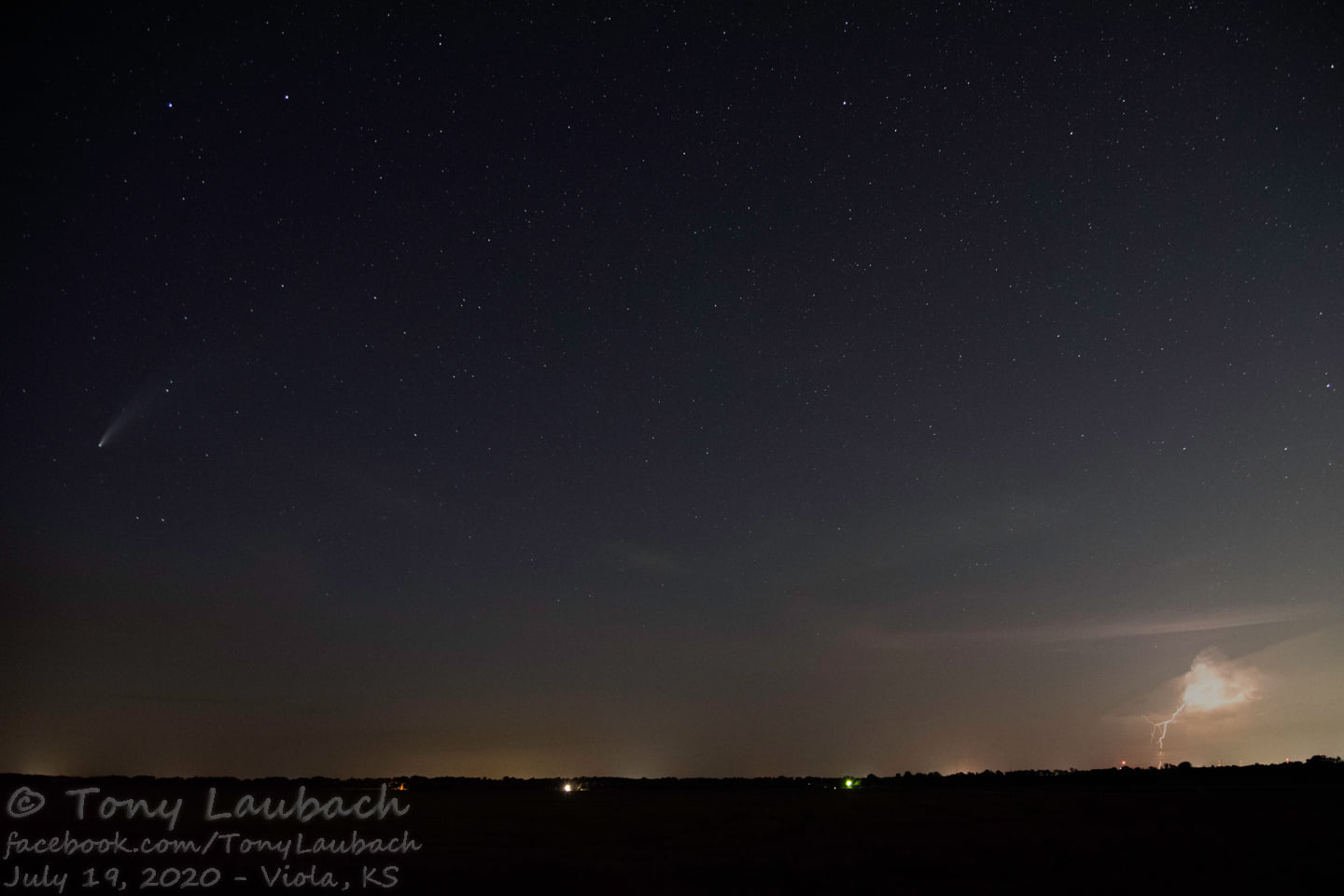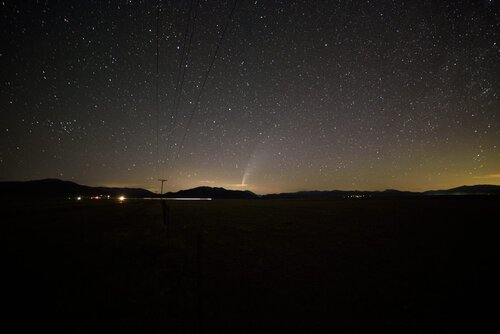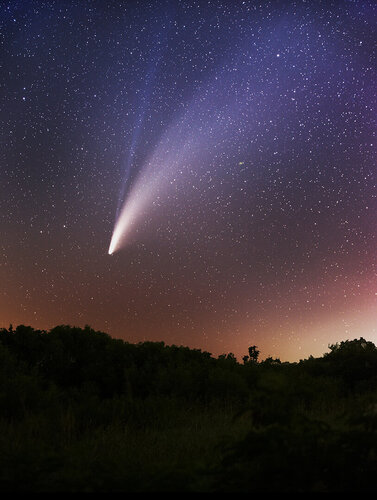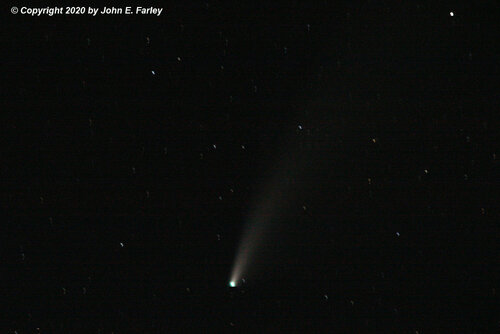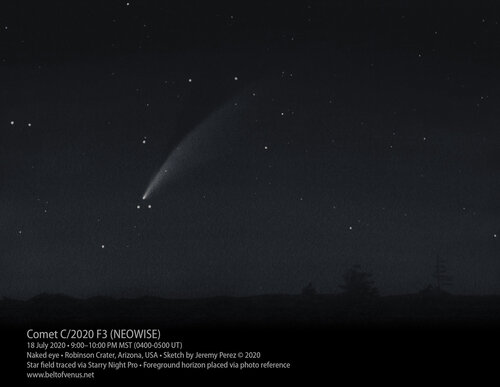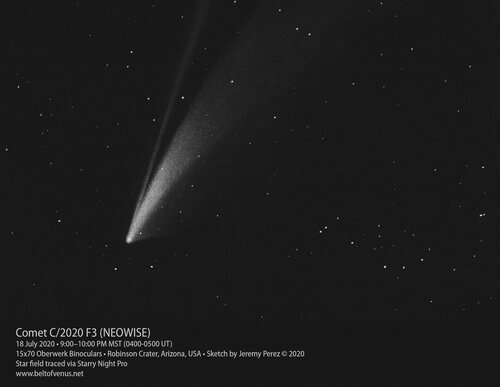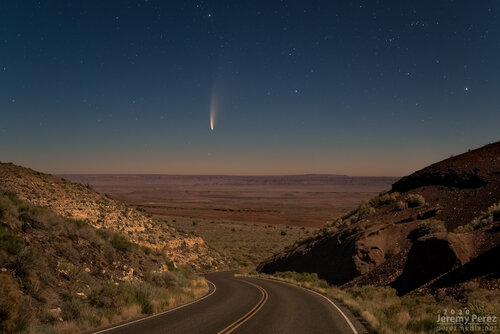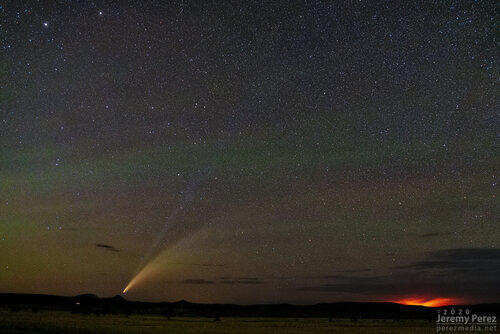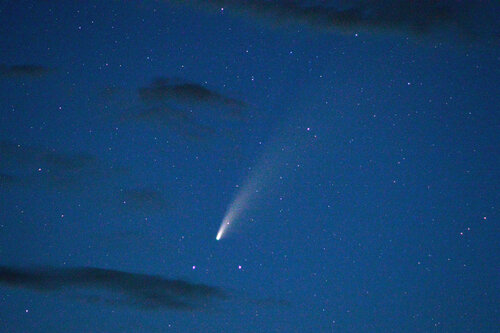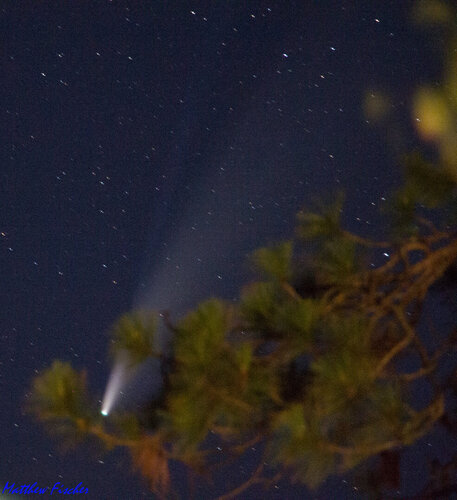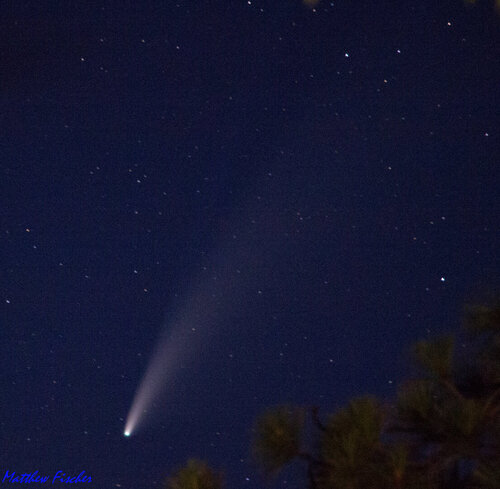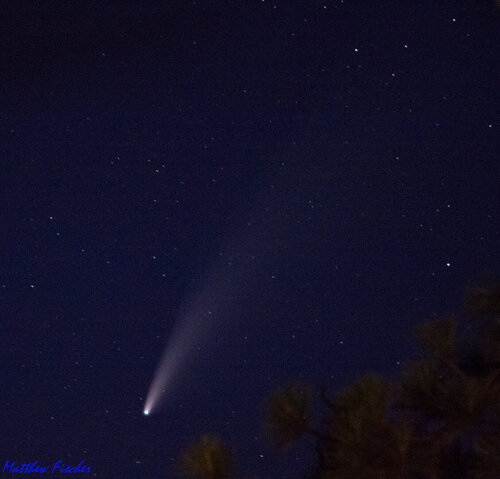Where I was camping in Park County last night has (to me atleast) a good dark sky & great view of the stars - with exception of very low in the northeast, a bit of light pollution from CO-Springs. The view there is spectacular compared to anything at home.
As mentioned in a previous post, my low northwest view is blocked by trees, but I wandered around a bit trying to find a spot, and pretty sure I saw part of the tail through a couple small breaks in the trees.
As mentioned in a previous post, my low northwest view is blocked by trees, but I wandered around a bit trying to find a spot, and pretty sure I saw part of the tail through a couple small breaks in the trees.

